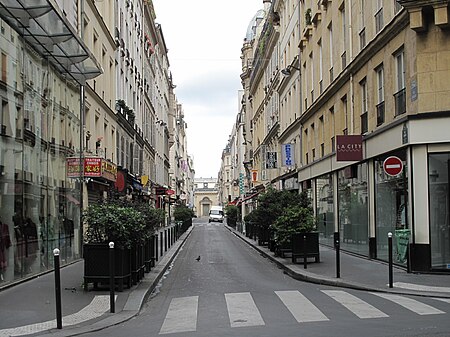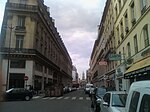Rue Joubert
Paris road stubsStreets in the 9th arrondissement of Paris

The rue Joubert is a street in the 9th arrondissement of Paris, France. It is named after General Barthélemy Catherine Joubert, who was fatally wounded at the Battle of Novi in 1799. At n°20, (junction with rue de la Victoire) is a mansion of the French architect François-Joseph Bélanger, which for his wife Mademoiselle Dervieux, a dancer, he rebuilt in Pompeiian style after his release from the Saint-Lazare jail during the French Revolution.
Excerpt from the Wikipedia article Rue Joubert (License: CC BY-SA 3.0, Authors, Images).Rue Joubert
Rue Joubert, Paris 9th Arrondissement (Paris)
Geographical coordinates (GPS) Address Nearby Places Show on map
Geographical coordinates (GPS)
| Latitude | Longitude |
|---|---|
| N 48.874594444444 ° | E 2.3315055555556 ° |
Address
Rue Joubert 13
75009 Paris, 9th Arrondissement (Paris)
Ile-de-France, France
Open on Google Maps











